Tag: Training Tips

Why Wrist Mobility Matters For Bodybuilders And How To Improve It
Often forgotten, your wrists can make or break a great lift with poor mobility.
We often over-look certain joints in our body and take them for granted. Our bodies are fairly resilient, right? While that may be true, for those of us bodybuilders looking to make big gains without feeling the pressure of unwanted pain and strain on our muscles, joints, and ligaments, then it is important to notice when things just don’t feel quite right. Our wrists and their mobility are crucial to our ability for big lifts and gains, and they should not be a limiting factor in our development.
Poor wrist mobility can lead to time away from the gym where those gains happen and unfortunate pain in a vital joint for simple everyday movements. In terms of lifting, if you are going to lift, your wrist will be involved and while wrist injuries are unfortunately unavoidable, they can be minimized with proper care and mobility work to ensure those big lifts don’t take a toll on your wrists.
With many athletes like CrossFitters and Olympic weightlifters, wrist straps are common as a source of support for their otherwise heavy movements. The amount of weight and pressure we ask our wrists to handle everyday can be exhausting and if we neglect the proper attention to flexibility and form, our risk of injury and damage really increases. But we can prevent this as much as possible through mobility exercises and proper form.
Quick Breakdown Of The Wrist
Your wrist is actually a multi-joint muscle that spans several joints. They start in your forearm and cross between your radius and the bones in your wrists. They also span into your hands and fingers allowing for all of that movement we humans are fortunate enough to have. With multiple ranges of motion, we can move our palms backwards and forwards (flexion and extension) and from side to side (adduction and abduction). Allowing for our grip strength, if our wrists lack mobility, we often rely on our shoulders and elbows for compensation (1).
Mobility Matters
Wrist mobility matters for our overall health, but for us bodybuilders, they allow us to execute lifts properly with great technique. Staying on top of form while also working on wrist mobility allow us to stay on top of our game and injury free. If your job requires you to sit at the computer or use a phone, the chances are high that your wrists become fairly stiff ruining our range of motion (2).
With weak or stiff wrists, we rely on not only shoulders and elbows, but also our forearms which can add unwanted stress to that muscle as well. Often times you will see Olympic lifters bounce the bar off their shoulders in efforts to re-grip the bar so they take the stress off their joints and other muscles to properly correct form and lift heavy weights for competition.
Strong wrists will encourage the right grip, align your body for proper form, and make sure there is a good path for the bar to travel to ensure you get all the benefits of whatever lift you are doing (3). If you do find you have wrist pain when you lift, or even during everyday tasks, it is not too late to change this. Mobility and strengthening exercises will ensure your wrist health stays in peak shape as well as all of your workouts.
Let’s Fix It
These wrist strengthening and mobility exercises are great for a warm-up stretch, mid-workout check-in, or post-workout recovery and really help get rid of unwanted pain and work for your overall benefit.
Wrist Rotations
Wrist rotations are a basic way to improve wrist mobility. These can be done anywhere and at any time to really work on getting those wrists to where they need to be. Wrap your fingers together and move your wrists around in different positions. If one spot feels tight or sore, pause on that spot and really work out the kinks.
Prayers
A very simple way to stretch the wrist flexor muscles, these can also be down anywhere and whenever you feel like working on some mobility. Start with your palms together and raise your hands over your head. Keeping your palms together, move your hands down as far as they will go. Hold for around 10 seconds and repeat the exercise for your desired numbers of times.
Wrist Walks
Wrist walks are great for really working range of motion. Starting with your palms on a wall, extend your arms. While keeping contact on the wall, walk your hands down as far as they will go. Once you reach your limit, turns your hands so your fingers are pointed to the ground and walk your wrists back up the wall.
Desk Wrist Leans
It is important to not go too far past your limit to cause more pain and keeping contact with the desk is key. Lean against a desk or table with your arms extended and palms flat. Rock back and forth gently as you really feel that stretch. For side to side movement, turn your hands on the desk so your fingers face opposite each other. Rock gently from side to side working them from a different angle.
Planche Push-Up
The Planche push-up position may be too much for some, so if you need to, drop to your knees for a modified version. In a plank position with your arms fully extended, turn your hands so your fingers face your toes. With a tight core, shift your body slightly forward so your shoulders are over your wrists. Hold for around 30 seconds, rest, and continue for your desired number of reps.
Wrap Up
Our wrists take a beating every day. We use them for everyday tasks as well as those tough workouts and big lifts. Having solid wrist mobility not only aids in your overall health, but allows for those big gains to shine through, something we all strive for. From promoting proper form to allowing us to lift big, our wrists are crucial for our bodybuilding goals. Try these wrist mobility exercises to really aid in growth and get rid of unwanted pain to keep working hard in the gym without needing any days off.
Let us know what you think in the comments below. Also, be sure to follow Generation Iron on Facebook, Twitter, and Instagram.
*Images courtesy of Envato
References
Berger, Richard A. (1996). “The Anatomy and Basic Biomechanics of the Wrist joint”. (source)
Ryu, Jaiyoung; Cooney, William P.; Askew, Linda J.; An, Kai Nan; Chao, Edmund Y. S. (1991). “Functional ranges of motion of the wrist joint”. (source)
Lee, Julia-Ann; Sechachalam, Sreedharan (2016). “The Effect of Wrist Position on Grip Endurance and Grip Strength”. (source)

These Exercises Are Key to Developing Great Shoulder Stability
Daily life wreaks havoc on our shoulders.
Between sitting for hours hunched over a computer and behind a steering wheel, we’re constantly curled over with lousy posture. According to the Mayo Clinic, there’s a direct link between poor posture and shoulder pain.
The shoulder is one of the most important joints in the body, designed to promote a wide range of three-dimensional movements. There’s a reason we shoulder a burden rather than knee or hip one.
Runners would never hit the trails without stretching. But lifters routinely tackle some heavy iron without prepping the shoulders. To go from a typical day of sitting in a hunched-over position to some full-blown lifting is a recipe for shoulder injuries and long-term ailments. Even if you lift first thing in the morning, you’re still feeling the cumulative effects of daily sitting.
By taking just a few minutes to perform the following movements at the start of a workout – or even on an off day or non-shoulder day – we can improve our posture and shoulder stability while reducing the risk of injury and improving our performance in the gym.
Shoulder Squeezes
What it does: This counteracts the impact of sitting all day and also mimics the proper movement of the shoulders during lifting.
How to do it: Instead of thinking in terms of squeezing your shoulder blades together, think in terms of pulling them back and then down, as if toward your back pockets. This not only resets your posture from sitting hunched over a computer or behind a steering wheel, but it also moves the shoulders the way they’re meant to move during pressing lifts. This move can be done throughout the day, not just during this routine.
How many? 2 sets of 10 reps with 30 seconds rest between sets.
Stair Stand
What it does: This also counteracts the impact of sitting all day by resetting your posture.
How to do it: Stand on the first step of a staircase. With one hand holding onto a railing or wall, edge back until your heels are off the step and hanging in midair. Let your body’s weight press down into the heels.
How many? One minute on each side, allowing your shoulders to drop back and down and your posture to reset.
Reverse Hand Clasp
What it does: This is a good test of your shoulder mobility.
How to do it: Stand with one hand behind your neck and your elbow pointing up. Use your other hand – or your other hand gently pulling a rope or towel held on both ends – to pull your elbow down. You’ll likely find this easier on your dominant side (i.e. right-handed people pointing the left elbow up). Unlike a lot of stretches, you can make fairly quick progress on this one if done daily, to the point where you can forego the towel or rope and gradually grasp hands on both sides.
How many? 2 sets of 10-second holds on each side.
90/90 Stretch
What it does: This opens up your shoulders while stretching the muscles of your middle and upper back, counteracting the effects of sitting all day.
How to do it: Lie on the ground on your left side with legs tucked into the torso at a 90-degree angle. Keep both arms straight parallel to your knees. Keeping the knees together and on the ground, rotate your chest and right arm to the right, putting your back on the ground. Hold for two seconds and return to starting position.
How many? 2 sets of 10 reps to each side with 30 seconds rest between sets.
Cat/Cow
What it does: This compound yoga move strengthens and stabilizes the shoulders while also improving flexibility to the lumbar and cervical spine.
How to do it: Start on all fours with hands beneath your shoulders and knees on the ground. Inhale, dropping your chest as you push your hips and shoulder blades back into cow position. Lift your chin and chest and gaze forward. For cat, exhale as you draw your belly button to your spine and round your back toward the ceiling like a cat.
How many? 2 sets of 10 reps of each with 30 sec. rest between sets.
Plank
What it does: Your shoulders are doing much of the work for this familiar exercise that promotes overall core stability.
How to do it: Lie in a prone pushup position with forearms resting on the floor, elbows under shoulders and bent 90 degrees. Push up off the elbows, tucking your chin so your head is in line with your body. Keep head in line with the spine and belly button drawn in. Hold for one minute.
How many? 2 sets of 60 seconds with 60 seconds rest between sets.
Side Plank
What it does: This challenges shoulder stability as well as the obliques.
How to do it: Start on the ground on your left side with your left forearm on the ground and your elbow under your shoulder. Push up off your elbow, creating a straight line from ankle to shoulder. Your hips should be off the ground and only the side of your bottom foot and your elbow should be on the ground. Hold for 30 seconds or do 10 reps of 3 seconds each.
How many? 2 sets of either of the above options.
Child’s Pose
What it does: This yoga resting pose is effective for stretching out the shoulders.
How to do it: From a kneeling position, touch your big toes together and sit on your heels. Separate your knees about hip-width apart and lay your torso down between your thighs. Place your hands on the floor along your torso, palms up, and release the fronts of your shoulders toward the floor. You should feel the weight of the front of the shoulders pulling the shoulder blades wide across your back.
How many? Hold pose for 30 seconds, rest 10 seconds, repeat.
Pete Williams is a NASM-certified personal trainer and the author or co-author of several fitness books, including Core Performance.

3 Proven Ways To Boost Muscle Growth For Real Results
Take the guessing game out of your routine.
“If you love life, don’t waste time, for time is what life is made up of.”
The above quote is from the late, great, Bruce Lee. The Jeet Kune Do creator, movie star, and world philosopher was a busy man and regarded his time as one of his greatest commodities. And we should do the same. While we might not all be movie stars or that of celebrity status, we have busy lives. Between work, personal time, relationships, and working out, sometimes we feel spread thin. But our muscle growth shouldn’t suffer just because we are busy.
Many of us are going to the gym and slugging it out in an all-out war against the weights. While guts get the glory and going H.A.M. is definitely a real thing, the old adage of working smarter and not harder definitely applies. Like anything, you want to take a cerebral, as well as action-oriented solution, to your building goals and that starts with research and experimentation. On top of this, seeking advice from professional athletes and those bodybuilders we know and love can go a long way.
Muscle growth seems to be a mysterious topic for a lot of fitness enthusiast. Whether it’s the beginner who doesn’t know where to start or the builder who’s reached a plateau, nailing down a clear and concise plan for muscle growth seems to be elusive…until now.
We have narrowed down three proven ways to boost muscle growth. While there are of course plenty of ways to do so, we wanted to share these 3 tips because we feel they can be very beneficial to you. By putting these into your routine, you set yourself up for better success come your workout.
3 Proven Ways To Boost Muscle Growth
Let’s take a look at 3 proven ways to boost muscle growth so you can get the most out of your muscle building and physique sculpting goals. Stop wasting your time by doing the same stuff and work to build muscle effectively and efficiently so you see the best gains possible.
1. Time Under Tension
Time under tension (TUT) is like the pi symbol in mathematics. It’s the building block for muscle growth, and what you need to focus on if you want to get bigger. Tension promotes amino acid transport into the muscles, activates the mTOR pathway of protein synthesis, and triggers small injuries in the muscle cell structure that leads to repair and additional growth (1).
This added resistance can come in the form of many different exercises, but here is where cable machines can be beneficial. That added level of support while working out, plus the tension of the cable offers resistance great for building gains. Of course, resistance bands are designed for this purpose well.
Related: Jim Stoppani Answers: Should You Lift Light Weight Or Heavy For Optimal Muscle Growth?
2. Eccentric Contractions
There are two ways your muscles exert force, concentrically (shortening) and eccentrically (lengthening). Eccentric contractions work when your muscle works against an opposing force and then needs to back track and reverse that movement. The benefit to eccentric contractions are that you will get stronger and increase muscle mass given the added tension and need for the movement to take place (2). Plus, more structurally, you will build stronger connective tissue for additional support.
A great way to apply this to your regular workout would be to load a weight slightly higher than what you normally do for a specific exercise, and have a partner help you with the positive (concentric) portion of the exercise, then do the negative (eccentric) portion without assistance. Not only do you get the benefit of performing this eccentric movement, but you also will have the support of a partner to aid in all your goals.
Related: Supercharge Muscle Growth and Recovery with Full Body Workouts
3. Don’t Blow Your Back Out
Your spine is the epicenter combining brain and brawn, literally. With that being said, protecting it should be one of your highest priorities. If you can’t move, you can’t build muscle, so protecting your back is key. One of the best ways of protecting your back while building muscle in the very same area are front squats.
Front squats are great for activation of the vastus medialius (quadriceps) and the biomechanics are better for your body in general than a back squat of the same weight. Front squats can also reinforce form so you take technique more seriously for added safety.
Can Supplements Help Boost Muscle?
Supplements have proven to be great aids to building muscle, so long as they are from reputable brands and contain premium ingredients. Some staple supplements used to increase muscle include things like protein powders to pump you with protein for growth and better recovery (3), pre-workouts to increase energy and get the blood flowing for muscle pumps (4), and BCAAs as intra-workout fuel to stimulate growth and burst through fatigue (5).
However, if you are more advanced and are seeking more out of your supplementation routine, give mass gainers and casein protein a try. Able to pump you with protein, as well as other ingredients, you will find these two supplements are game changers for those serious about building muscle.
When it comes to supplements, finding only the highest quality products will give you comfort in knowing what you are putting in your body is working for you and your gains.
Wrap Up
Building muscle is hard but these 3 ways to boost muscle growth are great as you look to get the most out of each and every workout. While there are many other tips that can help you build muscle like nutrition and adequate rest, we felt these were some of the most overlooked. Incorporate these building blocks into your routine and let us know if it helps you get the most out of your workout. You will find is that muscle growth depends on a number of factors, but at the end of the day, by following the most effective steps, you can get there no problem. With these three tips, as well as with proper supplementation, you can build muscle, tone your physique, and see those results you want most.
Let us know what you think in the comments below. Also, be sure to follow Generation Iron on Facebook, Twitter, and Instagram.
*Images courtesy of Envato
References
Burd, N.; et al. (2012). “Muscle time under tension during resistance exercise stimulates differential muscle protein sub-fractional synthetic responses in men”. (source)
Hody, S.; et al. (2019). “Eccentric Muscle Contractions: Risks and Benefits”. (source)
Pasiakos, S.; et al. (2015). “The effects of protein supplements on muscle mass, strength, and aerobic and anaerobic power in healthy adults: a systematic review”. (source)
Martinez, N.; et al. (2016). “The effect of acute pre-workout supplementation on power and strength performance”. (source)
Blomstrand, E. (2006). “A role for branched-chain amino acids in reducing central fatigue”. (source)
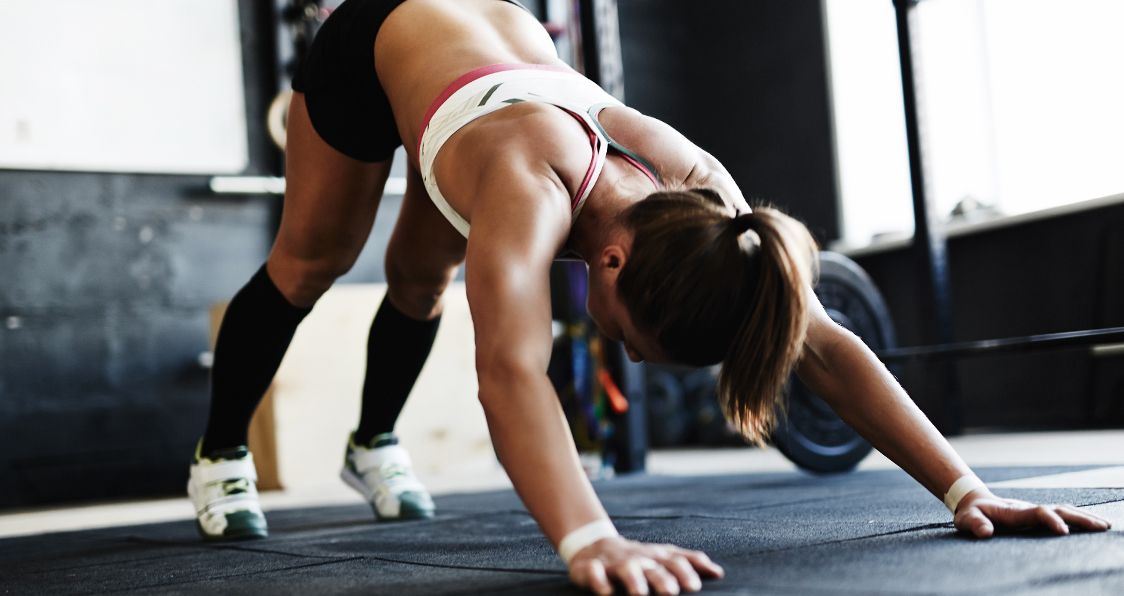
This is How To Shorten Your Recovery Time Between Workouts
Shorten Your Recovery Time Between Workouts With Theses Steps
The work for your dream physique doesn’t end when you walk out of the gym. Contrary to popular belief, you don’t build muscle when you workout. You break muscle tissues while you train and build muscles when they recover while you’re resting outside the gym.
You need to speed up your recovery between workouts to reach your goals faster. Among many other problems, a slow recovery period can cause an injury. Mastering the recovery game will make sure you don’t leave any gains on the table.
Adequate Sleep
Your body recovers the most when you’re deep asleep. We can’t overstate the importance of a good night’s sleep. No matter how busy you are, you need to get 6-8 hours of quality sleep for quicker recovery times and maintaining a healthy nervous system.
Don’t be the person who wears their short sleep times as a badge of honor. Take the necessary steps like switching off your phone, dimming the lights well in advance of your bedtime or taking a hot water shower, if necessary.
Focus on Your Diet
The role of a well-balanced diet is indispensable in recovering between workouts. Maintain the right proportions of the three macronutrients (carbs, protein, and fats) in your diet as per your fitness goals.
Right after you finish your workout is the key time to eat a protein-rich diet to kick-start your recovery process. On the days you go harder than usual in the weight room, remember to load up on extra carbs. Making small adjustments like these are critical to a faster recovery.
Hydrate
Our bodies are 70% water, and yet many people make the mistake of not drinking enough water throughout the day. Drinking water can help rid your body of toxins and can prevent dehydration lead headaches, acne, etc.
You need to stay away from dehydration as it can lead to sore and painful muscles. Your goal should be to drink a gallon of water every day. Drinking the recommended amount of water can also help promote cardiovascular health and lead to healthier looking skin.
Stretch Every Day
Stretching is one of the most overlooked aspects of working out. Many people think stretching is not for bodybuilders and completely ignore it. Stretching out your muscles after workouts can aid muscle recovery and help in preventing future injuries.
You can improve your mobility and get rid of joint pains by stretching. It’s better to stretch after training than to apply ice packs after you pop a muscle while working out because of stiffer joints and muscles.
Supplementation
Supplements can be incredibly efficient in speeding your recovery between workouts. There are different types of supplements you can use for better recovery. You can use a BCAA supplement during your training session to start your recovery process.
A protein shake right after your workout will be soaked by your muscles like a sponge which can help in speeding up your recovery. A glutamine supplement before you hit the sack can help in repairing your muscles while you sleep.
How much water do you drink in a day? Let us know in the comments below. Also, be sure to follow Generation Iron on Facebook and Twitter.
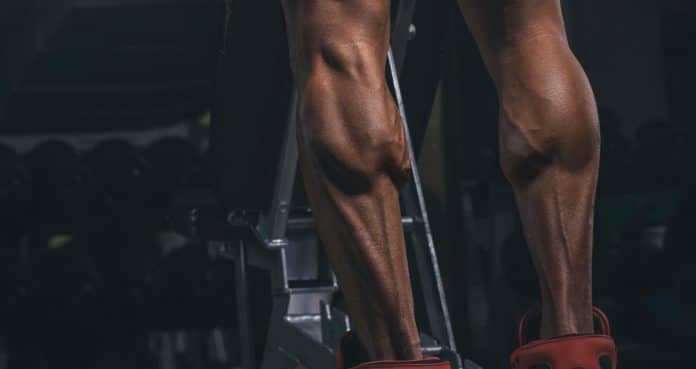
5 Rules of Building Monstrous Calves For Lower Body Gains
Build those monstrous calves with these 5 rules.
If you were to make a list of the most undertrained and overlooked muscles, calves would probably end up at the top spot. Most people have toothpick calves because they treat them as accessory muscles. And even those who partake in something like leg day may often skip the calf work altogether. And while in the moment this may seem fine, over time it will obviously hurt you.
You need to train your calves like you train all your other muscles. You should know about the unsaid rules of training calves. Calves can be one of the most stubborn muscles to develop and you need to be ruthless with them if you want them to grow. That’s just the honest truth and being prepared for whatever comes your way when training calves is imperative if you wish to actually see growth.
But you may be wondering how best to actually build those monstrous calves. With so many workouts, it may seem like a no brainer, but it isn’t necessarily the exercise, but more so the approach to training. What you will find are key tips to building muscles and especially those stubborn calves as you wish to see those desired changes become reality.
Let’s jump into the best ways to build those calves and offer up 5 tips so you see success. Building muscle in general can be challenging but with the right approach to all things gains, what you will find are those calves will grow in no time and you will see results.
Benefits Of Building Those Calves
The benefit of building strong calves really comes in handy with athletic performance power driven from the legs. What you will find is that strong calves can stabilize your knees and reduce the risk of injury when working hard. On top of that, your lower body aesthetic will shine and you won’t be disappointed with the results of how you look and feel.
5 Rules For Building Monstrous Calves
Let’s jump into the 5 rules for building those monstrous calves. What you will find are you can build those calf muscles effectively for strength and size no matter the exercise or overall workout.
1. Train Them From All Angles
For overall development of the calves, you need to train them from all the angles. Changing the feet placement on the machine targets different parts of the calves. Standing with your feet parallel to each other will target the medial calves.
To target the inner calves, stand with your toes placed apart and your heels together forming a “V”. Placing your toes together and heals apart (forming an “A”) will target the outer calves. Training the muscle in different ways not only builds better overall strength but also will aid in symmetry and add to that aesthetic. Only working one side of the muscle may give it a lopsided look that you just don’t need.
2. Switch the Intensity
You can’t expect to perform the same calf exercises in every workout and expect to see results. You need to shock your muscles in every workout for them to grow. Perform different exercises in every workout and maximize intensity while keeping yourself safe and supported.
Change the intensity of your calf workouts by switching between light weight and high reps and heavy weights and low reps. While using light weights, perform a lesser number of sets as compared to using heavier weights. While this is common with most exercises, what you will find is that the intensity of your workouts will determine just how much muscle is built and how much muscular endurance you build.
3. Full Range of Motion
Most people make the mistake of lifting weights which are too heavy for them. Lifting heavy while training calves can limit your range of motion. You need to follow a full range of motion to recruit all the muscles fibers in your calves.
While performing the calf raises, your heels should be a few inches off the ground at the bottom of the movement. At the top, your feet should look like that of a ballerina standing on her toes. Working with a full range of motion, and even a half range of motion just to mix things up, will better prepare you as you work out and see the best gains possible.
4. Train Them if They Aren’t Sore
A rule of thumb for training calves is you can train them if they aren’t sore. Calves are relatively small muscles and need a smaller amount of time to recover after your workouts. If you have weak calves, you can take the liberty of training them whenever they aren’t sore.
You need to perform a variety of standing (legs extended) and seated (knees bent) calf exercises to optimally train your calves. The standing variation trains the gastrocnemius muscle while the seated trains the soleus muscle. Plus, you at least add a little variety into your routine.
5. Use Advanced Training Techniques
You can take your calf training to the next level with the advanced training techniques. Use supersets, drop-sets, intra-set stretching, forced reps, negative reps, and other advanced techniques to completely annihilate your calves.
You don’t have to stick to the vanilla calf training. If you have special needs, cater to them by going out of the way. If you have weak calves, don’t blame your genetics, work on your calves until they turn into full brown bulls and advanced techniques can certainly help you get there.
Wrap Up
Growing our calves isn’t easy, but with these 5 rules to build those monstrous calves you can see the best gains possible. Working with different angles, training intensity, range of motion, soreness and fatigue, and advanced training techniques is a sure-fire way to attack those calves so they grow. What you will find is your performance will improve as well as your aesthetic, so others will envy those monstrous calves.
Let us know what you think in the comments below. Also, be sure to follow Generation Iron on Facebook, Twitter, and Instagram.
*Images courtesy of Envato
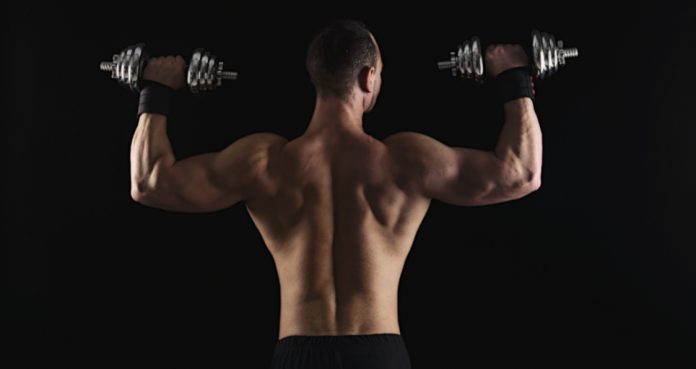
An Old School Back Workout For a Wider and Thicker Back
Get Golden-Era Back Workout for a Cobra Back
As the gyms and exercise equipment get better with new research and technology, more people are falling into the trap of relying solely on machines in their workouts. A chiseled V-taper is the result of a carefully crafted workout.
While the machines can bring you the separation and definition, if your goal is the golden-era aesthetics, you’re better off sticking to the old school back workout. We’ll be focusing on compound movements for building width and thickness in your back.
Pull-ups – 50 Reps
Pull-ups should be a staple in your back workouts. Start your workout with 50 reps of military-style strict pull-ups. Don’t use momentum by swinging your legs or jerking to lift yourself up.
If you can’t complete the 50 reps in one set, use as few sets as possible. Shorten your rest periods between sets to keep the tension on your lats. Use a pull-up assist machine if you can’t perform bodyweight pull-ups.
Deadlifts – 3 Sets 8-6-4 Reps
Perform the deadlifts at the beginning of the workout to exhaust your backs. A good back workout should be as brutal as a leg workout done to the max. Deadlifts are a compound exercise and one of the key movements to build strength, conditioning and muscle mass.
Since you’ll be performing fewer reps on the deadlifts, your goal should be to move as much weight as possible. Make sure you’re don’t lose your form while performing the exercises listed in the workout.
Behind the Neck Lat Pulldowns – 3 Sets 15-12-10 Reps
Behind the neck lat-pulldowns can better recruit your lats as compared to the orthodox version. While the pulling exercises work the width of your back, the rowing movements work the thickness.
It’s important to have a mix of pulling and rowing movements to build a cobra back. People with stiffer shoulder joints can have a problem performing the exercise and should warm-up their rotator cuffs before beginning to train.
T-Bar Rows – 3 Sets 12-10-8 Reps
T-Bar rows are one of the most underutilized back exercises and are sadly fading out. If you don’t have access to a T-bar row machine at your gym, you can perform the exercise on a barbell by placing one side in a corner and attaching a V handle.
Bend over at your hips so your upper body forms a 60-degree angle with the floor. As you pull the bar towards your chest, pause and contract your lats at the top of the movement. Return to the starting position and repeat for the recommended repetitions.
Dumbbell Pullovers – 3 Sets 12-10-8 Reps
Dumbbell pullovers are incredibly effective in shaping the v-taper. Lie down across a flat bench and place your shoulders on the bench. Your knees should be bent, feet placed flat on the floor, and hips as close to the floor as possible.
Hold a dumbbell right above your chest with your elbows slightly bent. Maintain the slight bend in your elbows as you lift the dumbbell off your chest and lower the dumbbell to the floor when it passes over your head.
Barbell Rows – 3 Sets 12-10-8 Reps
Barbell rows target the upper and middle back and help in building the thickness in your back. Pulling the barbell towards your lower abdominal will target your middle back and bringing the bar towards the upper abs will train your upper back.
Using the wrist straps can help you get a better pump in the exercise as it eliminates the wrist and forearm recruitment. In the compound exercises like the barbell rows, your grip strength is more prone to fail before your back.
Who do you think has the best back? Let us know in the comments below. Also, be sure to follow Generation Iron on Facebook and Twitter.
*Header image courtesy of Envato Elements
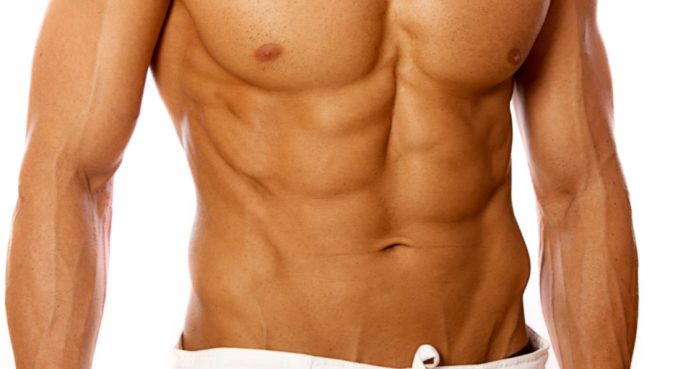
Get A Shredded Midriff With This Ab Workout
Get A Shredded Midriff With This Ab Workout
Washboard abs are hard to get. This is why only a few people have them. It takes patience, persistence, and an iron will to get a shredded core. You have to focus on your training and nutrition if you want to build a six-pack.
While it is true your diet plays a big role in building abs, you can’t overlook the importance of your workouts. A balanced diet can help you reduce your weight and body fat percentage and your ab workouts will help you get a shredded midriff.
1. Hanging Leg Raises – 3 Sets 20 Reps
Hanging leg raises are a great way to start your ab workout. It will help exhaust your abdominals at the beginning of your workout. This exercise helps target your lower abs which hold the stubborn body fat.
Most people make the mistake of swinging their bodies while performing this exercise. You need to keep your upper body at a fixed position and only move your legs. Bring up your legs so they’re parallel to the floor. Keep the movement slow and deliberate.
2. Cable Crunches – 3 Sets 20 Reps
Using cables in your ab workout helps you maintain a constant tension on your midriff throughout the exercise. Cable crunches work the upper and middle abdominal muscles and will leave you with an incredible pump by the end of this exercise.
Attach a cable extension to the pulley. Kneel down facing the pulley and hold the cables at the sides of your neck. Perform a crunch and try touching your knees with your elbows. Squeeze your midsection at the bottom of the movement.
3. Russian Twists – 3 Sets 20 Reps
Obliques are the most overlooked muscle group when it comes to ab training. Obliques give your abs the shredded and peeled look. If you find this exercise easy, use weights to add resistance. Russian twists also help with developing the V-cut in your lower abdominals.
Sit with your feet lifted about six inches off the ground. Hold a dumbbell or a weight plate in front of your chest. Turn to your right side, exhale and squeeze your oblique. Return to the starting position and repeat for the left side.
4. Planks – 3 Sets 1 Minute Each
Planks have earned a name for themselves around the world for their effectiveness. They are incredibly effective at giving you a tight and firm core. Planks also help with building strength and conditioning your midriff. Increase the time as you get better at this exercise.
Many people make the mistake of letting their crotch hang low or forming a bridge by lifting their butt too high. This takes the tension off your core. Make the most of this exercise by holding your body in a straight line and keeping your core tight.
5. Decline Crunches – 3 Sets 30 Reps
Crunches are the staple exercise in most ab workouts. Crunches work the upper and middle abdominals, but performing the crunches on a decline bench will target your lower abs as well. If 30 reps are too easy, feel free to use weights.
Crunches aren’t just about going through the motions. Inhale while you’re at the bottom of the movement and exhale and squeeze your abs while you’re at the top of the movement. Keep your hands at the back of your head throughout the movement.
Which is your favorite ab exercise? Let us know in the comments below. Also, be sure to follow Generation Iron on Facebook and Twitter.
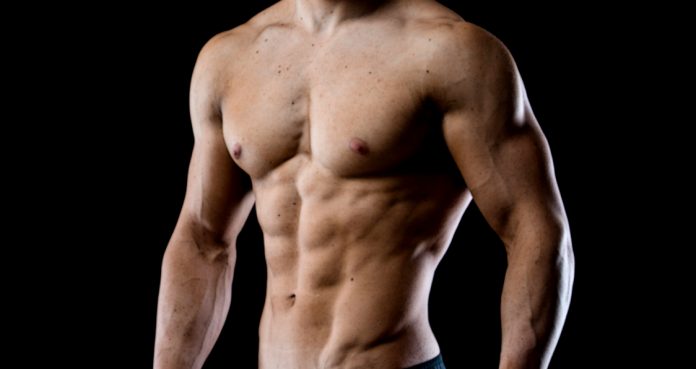
Looking to Build Muscle and Strength? You Need to Follow these Laws
Follow These Strength and Muscle Building Laws for Results
Bodybuilding is both art and science. If you’re looking to put on muscle mass or gain strength, there are set laws you need to adhere to. These rules are the holy grail of strength and muscle building.
Having a rule-breaking mindset might be a good thing, but it won’t do a lot for you in the gym. Muscle and strength building is like physics where sticking to the laws will get you the best returns.
Warming Up is Important
Most people make the mistake of not warming up their muscles before a workout. It doesn’t matter if you’re running late or you spent five minutes on the treadmill. You need to warm up your muscles with light sets and stretching.
Get the Volume, Reps, and Weights Right
You need to be clear about your goals before lifting weights. If your primary goal is to build strength you should lift heavier weights for fewer reps and do 5-6 sets of every exercise. On the other hand, if you want to build muscle, performer higher reps with lighter weights and keep the volume low.
Overtrain
The word ‘overtraining’ is thrown around by broscientists without understanding what it means. We’re using overtraining as a positive word which means training and exhausting your muscles to a whole new level. The negative type of overtraining happens when the CNS and immune system of a person takes a hit and his body fails to recover even after a small workout. Most people don’t have what it takes to even reach this level.
Change Your Routine
When you follow the same training program for a long time, your body will get used to it and will stop responding. You should keep changing your training routine to avoid or break a plateau. Although, make sure you don’t switch your routine way too often.
Try Different Grips
Tweaking your training even in the smallest way possible can bring incredible results. Switch between underhand, overhand or neutral grips. Changing grips will target your muscles a little differently. Using a thicker bar or Fatgripz can also prove effective.
Use Advanced Training Techniques
Advanced training techniques are a great way of shocking your muscles into growing. Drop sets, supersets, blood flow restriction training (BFR), negatives, intraset stretching are some of the most common types of advanced techniques you should try in your next workout.
Focus on Your Diet
You won’t see the desired results in your body until your diet is on point. You should be clear about your daily macronutrient (protein, carbs, and fats) goals. Eat 6-8 meals in a day at regular intervals to keep your metabolism going.
Recovery is the Key
Sleep is where all the magic happens. No matter how hard you workout in the gym, you won’t see the results until your body is properly rested. 6-8 hours of sleep every night are optimal to trigger the changes in your body.
Train Your Weaker Muscle Groups First
It can be tempting to train and improve your stronger muscle groups by training them before your weaker muscle groups, but you should be approaching it the other way around. Eg- If you train your biceps and triceps on the same day and your tris are lagging as compared to your bis, you should train your tris before your bis. And if your legs are lagging, you should train them after a rest day when your body is rested.
Establish a Mind-Muscle Connection
Mind-muscle connection in bodybuilding is what makes all the difference. Bodybuilding isn’t about going through the motions. Arnold famously said that you need to become your muscle when you train it. Focus on contracting and squeezing the living hell out of your muscles with every rep.
Are you breaking any one of these laws? Let us know in the comments below. Also, be sure to follow Generation Iron on Facebook and Twitter.

All-Time Best Back Exercises For the Perfect V-Taper
Best Exercises For Building A V-Taper
A V-taper is a result of a combination of factors and months, if not years, of hard work. Building a cobra back requires you to target your back from all angles and put equal focus on your upper, lower and middle back.
Just like us humans, all exercises aren’t created equal. A few exercises are more effective at building a wide and thick back than the others. You need to have a perfect mix of isolation and compound exercises in your back workouts to build the perfect V-taper.
Deadlifts
Deadlifts are the king of back exercises. It’s a compound (multi-joint) movement which can help in developing muscle mass, conditioning, and strength. Your goal while performing the deadlifts should be to lift heavier weights while keeping the rep-range low.
Not only will deadlifting help you in building your back but will also improve your core strength. A stronger core can result in better stabilizers which can help in performing all the other exercises.
Bent Over Single Arm Dumbbell Rows
Bent over dumbbell rows are a great exercise for developing your upper and middle back. Following a full range of motion while performing the exercises mentioned in the article is critical to ensuring you don’t leave any gains on the table.
Use accessories like the wrist straps to hold onto the weight. While performing the back exercises, your forearms are prone to giving up before your back. Using wrist straps can help you better focus on your back by eliminating your grip strength.
Lat-Pulldowns
While the rowing movements help in building the thickness in your back, pulldowns focus on the width. At the beginning of your back workouts, warm-up by performing 50 reps (in 2-3 sets) of the pull-ups.
Make sure you don’t use momentum by swinging back and forth to pull the bar to your chest. Maintain a strict form, and you’ll feel the wings growing out of your back. Just don’t go skydiving with your new wings.
Hyperextensions
The lower back is one of the most overlooked muscles when it comes to back training. The presence of a well-defined lower back can make or break a picture-perfect V-taper. Adjust the hyperextension machine so it doesn’t recruit your hams while performing the exercise.
If the bodyweight version of the hyperextensions is too easy for you, feel free to add resistance by using weights. Maintain a slight arch in your back throughout the exercise, and pause and contract your lower back at the top of the movement.
Seated Cable Rows
Seated cable rows target your middle back and can improve the separation in your back. Most people make the mistake of swinging back and forth while performing the seated cable rows.
Maintain the natural curvature of your back and push your chest out while performing the exercise. Contract your back as you bring the handle attachments of the pulley machine to your sides.
Which is your favorite back exercise? Let us know in the comments below. Also, be sure to follow Generation Iron on Facebook and Twitter.
*Header image courtesy of Envato Elements

4 Awful Strength Training Mistakes You’re Making That Cost You Muscle
Have you been working out for a while now but have seemed to hit a plateau? Perhaps, it’s because you’re making one of the common muscle growth mistakes below.
Initially, when you start working out, you may see a lot of muscle development. That’s due to the “newbie” gains everyone sees when they’re not used to lifting weights. Unfortunately, many people eventually stall out after this initial beginner phase. They’re in the gym consistently, yet they’re not moving the needle forward when it comes to making actual progress.
If that’s you, fortunately, it’s an easy fix once you cut these mistakes out below.
1. Not following a plan
If you’re going into the gym and doing random workouts every time, then you’re missing out on muscle for sure. It may seem beneficial to mix up your workouts as often as possible, but it’s actually counterproductive. A lot of the progress you’ll get from the gym comes from a structured and strategic plan (1).
random actions lead to random results.
Some people may not know which workouts to do, so they just go into the gym and pick movements on the fly, or maybe they’ve heard of the term “muscle confusion” which means that you want to mix up your movements for your body to continue to grow without adapting to the same movement.
Although part of this is true, you don’t want to mix up your movements as often as claimed. Yes, your body will eventually adapt to the workouts you’re doing, which is why it’s good to switch up your workouts periodically. However, it takes time before your body adapts and you’ll want to utilize this time to maximize muscle growth.
Master a Few Key Movements
Muscle growth is the byproduct of how strong you’re getting. The stronger you are, the more muscle you’ll have. And for you to get really strong on a movement, you’ll need to stick with the same exercise for enough time to build adequate strength. For your body to grow, you’ll want to master just a few key movements and stick to those same movements for 6-8 weeks. That’s the sweet spot.
That’s enough time for you to build as much strength and muscle as possible targeting key muscle groups, while also not too long for your body to become stagnant to the movements. After about 6-8 weeks though, you’ll want to switch up your movements to target muscle you aren’t hitting and to make sure your body doesn’t become too accustomed to the same movements.
Of course, it’s important that you mainly do compound movements, including barbell shoulder press and barbell squats for the best results.
2. Not tracking your workouts
Not only do you want to follow a training plan, but you also want to track the workouts you’re doing. This is important. You don’t want to go into the gym every time not knowing the weight, reps, and sets you did the time before. This makes your workout regimen disorganized and leads to less muscle growth.
That’s because you won’t be able to push yourself to your fullest capability if you aren’t doing weight and reps you should be doing necessary for muscle growth. Without knowing what you did in your prior workouts, you’re leaving muscle on the table. If you bench pressed 225 pounds for 5 reps last time, but you didn’t log it so you don’t remember, and this time you only bench pressed 215 pounds for 5 reps, it’s going to be much harder to build muscle.
We recommend you log your workouts through a notepad or training app. Just using a fitness tracker is linked to an increase in activity (2). This will ensure you remember everything you did in your workouts so that you can build a Greek God/Goddess physique.
When it comes to muscle growth, every rep, set, and weight you use is vital, especially if you’re past your “newbie” gains. Your muscle only grows when you place a stimulus on it greater than what it’s used to.
3. Omitting the progressive overload principle
According to legend, there was a fella named Milo of Croton who was a champion wrestler of ancient Greece; he was known for his incredible strength and athleticism. One day when he was roaming the hills of Italy, he stumbled upon mankind’s greatest secret to muscle growth. He found a calf near his home and decided to carry it on his shoulders every day for four years. Each day, the calf got bigger until it grew to a full-blown bull. Since the weight Milo carried increased each day — due to the growth of the calf — he became incredibly strong and muscular. This is all because of the potent effects of the progressive overload principle.
Tracking your workouts go hand in hand with this principle. Basically, the progressive overload principle is increasing the overload you place on your muscle.
In order for your muscle to grow, it must be forced to adapt to a tension it has not yet experienced.
You can do this by increasing the reps, sets, or weight (or the size of your pet you haul around town) (3). For example, if the previous time you did barbell bench press you did 3 sets of 225 pounds for 5 reps, next time you do them you’ll want to aim for 6+ reps with 225 pounds, or you’ll want to increase the weight to 230 pounds.
Of course, if you don’t track your workouts, you won’t be able to practice the progressive overload principle though.
4. Doing too much volume
This may sound contrary, but the reason doing too much volume is bad for muscle growth is twofold. For one, you risk overtraining and not getting the recovery your body needs to grow. For two, typically, when you’re doing too much volume it means you aren’t doing enough weight and focusing on strength. As aforementioned, how strong you are is directly related to how much muscle you have.
So you don’t want to focus on doing more volume for your muscle to grow, you’ll want to focus on getting stronger. And when you’re focusing on strength, you’ll want to keep your volume lower. That’s because for you to use the most weight you’re capable of using each set, you won’t be able to do too many reps or sets.
Training for volume has its time and place and is especially beneficial for bodybuilders and for that final layer of muscle that you want, but it’s not where the majority of your muscle growth comes from. It comes from strength training.
Funny enough, this study shows that high volume training and low volume training provide similar improvements in body composition (4).
There are sarcoplasmic muscle growth and myofibril muscle growth. Myofibril muscle growth gives you the bulk of your muscle and builds dense muscle. It comes from strength training. The last 10-20% of muscle growth comes from training for volume — sarcoplasmic muscle growth. You’ll mainly want to focus on myofibril muscle growth for a well-developed and athletic physique.
In order to do this, I recommend you lift weights in the 5-8 rep range and do 2-4 sets per exercise. This will ensure that you’re using heavy enough weight to spark muscle growth while making sure you’re able to push yourself each set and not overtrain.
Conclusion
After your beginner gains start to stagnate, many lifters plateau since they’re making one of the common mistakes above. Cut these lifting mistakes out and your body will continue to grow again.
For optimal muscle growth, it’s important to follow a structured workout plan, track your workouts, increase the weight you lift as often as possible, and not overload your muscles with too much volume.
Follow us on Instagram, Facebook, and Twitter for more training tips.
References
1 – Strategic Planning: Why It Makes a Difference, and How to Do It. (2009). Journal of oncology practice, 5(3), 139–143. https://doi.org/10.1200/JOP.0936501
2 – Laranjo L, Ding D, Heleno B, et alDo smartphone applications and activity trackers increase physical activity in adults? Systematic review, meta-analysis and metaregressionBritish Journal of Sports Medicine Published Online First: 21 December 2020. doi:10.1136/bjsports-2020-102892
3 – Evans JW (2019) Periodized Resistance Training for Enhancing Skeletal Muscle Hypertrophy and Strength: A Mini-Review. Front. Physiol.10:13. doi: 10.3389/fphys.2019.00013
4 – Thomas, M. H., & Burns, S. P. (2016). Increasing Lean Mass and Strength: A Comparison of High Frequency Strength Training to Lower Frequency Strength Training. International journal of exercise science, 9(2), 159–167.
